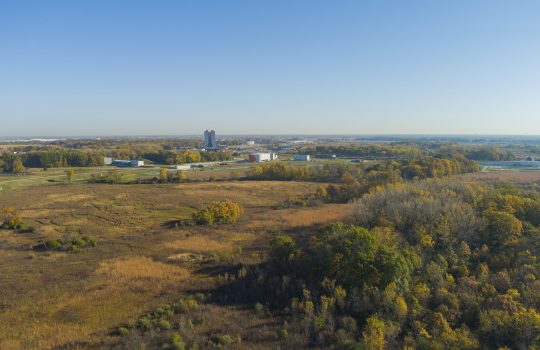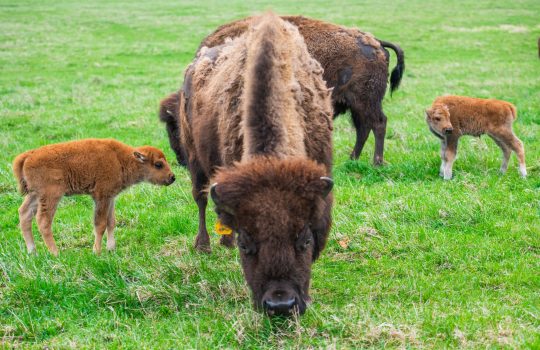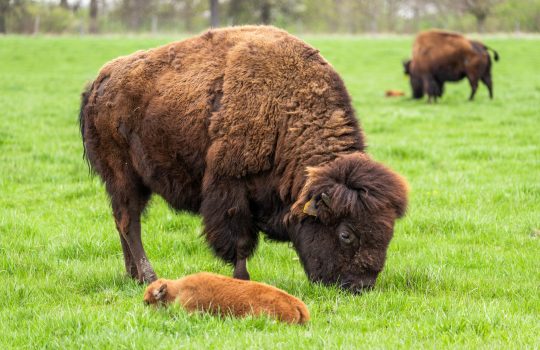Scientists at the Department of Energy’s Fermi National Accelerator Laboratory are constantly pushing at the boundaries of the unknown in their attempt to understand the origin and physical properties of the universe. Yet Fermilab is more than a gateway to the subatomic world: It’s also home to rare and endangered ecosystems, such as grassland prairies and riparian forests, which are becoming increasingly hard to find in the northern United States.
“Fermilab has many small pockets and remnant populations of plants,” said Fermilab ecologist Walter Levernier. “These still exist here mostly because when Fermilab was founded in 1967, much of the land was single-family-farmed.”

On the east side of the Fermilab grounds, a few large, stately honey locust trees grow directly over the bike path, where they dump most of their pendulous, spiral bean pods in the fall and winter. Photo: szántó
Hidden away on the Fermilab grounds are three tree species that produce large, conspicuous fruit that go uneaten by wildlife. Every year, these fruits are produced in the hundreds and fall to the ground beneath their parent trees, still waiting to be dispersed by animals that went extinct over 10,000 years ago.
The missing mammoths
When Lewis and Clark set out on their westward trek to the Pacific, they were given specific instructions by President Thomas Jefferson to be on the lookout for mammoths. Jefferson, who was an avid fossil enthusiast, didn’t believe in extinction (nor did most scientists at the time) and fully expected members of the expedition to find a menagerie of bygone beasts.
Of course, Lewis and Clark never found any living mammoths. Most of the world’s large mammals had gone extinct some 10,000 years ago. As more fossils were discovered, including the 13,000-year-old skeleton of a woolly mammoth about a mile from Fermilab in 1977, scientists and enthusiasts alike were able to paint a vivid picture of a world that once was.
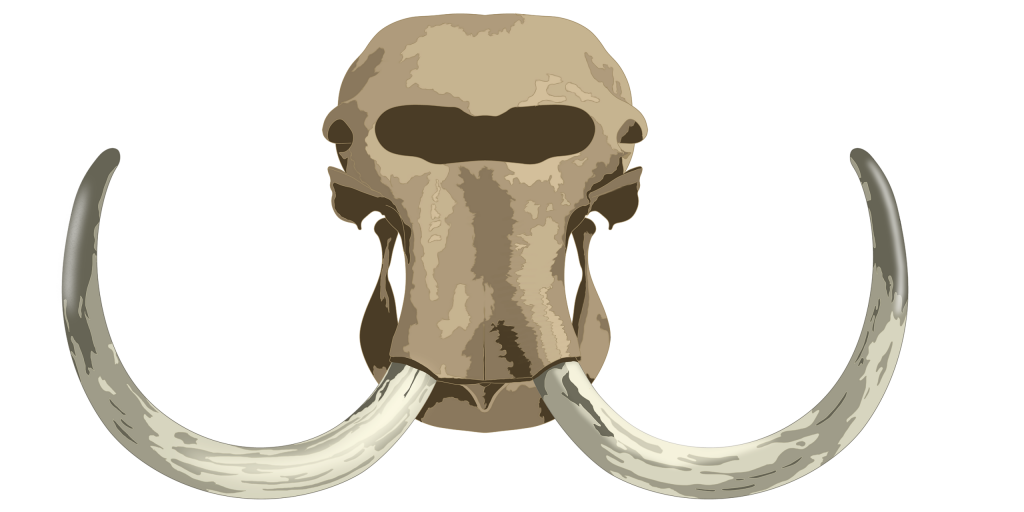
For millions of years, megafauna like mastodons would eat large fruit, carrying the seeds to new, freshly disturbed environments, thus expanding the range of these plants. Image: Jerald Pinson
For millions of years before and during the ice ages, giant mammals roamed most of the major continents. North and South America were home to ground sloths (Megatherium) as tall as a two-story building, heavily armored armadillos (Glyptodon) the size of compact cars, large dire wolves, cheetahs and saber-toothed tigers. A warming climate and the advent of a strange new type of ape that had learned to use tools would drive most species of megafauna to extinction not long after their first contact.
But they didn’t vanish without a trace. Throughout the millions of years megafauna dominated Earth’s landscapes, they coevolved with a variety of plants they depended on for food. Trees with large, conspicuous fruit were an enticing meal to animals who were large enough to pluck them directly from the canopy. In return, megafauna would obligingly transport the seeds in their stomach to new locations, helping the plants expand their range.
With the disappearance of most large mammals at the end of the ice ages, these plants found themselves bereft of their seed dispersers. Many of them would go extinct, while others managed to cling to survival by reproducing asexually. But the most successful of these anachronistic plants were those that managed to find new animals to disperse their seeds — us.
Anachronisms all around us
On the American continents, the wild ancestors of gourds, squashes and cucumbers (Cucurbita) grew in the open, sunny landscapes. Megafauna not only ate these fruits and dispersed their seeds, but also helped create the exact types of environments these plants needed to survive.
“If you look today at where forest elephants are living, they really modify the landscape very heavily,” said Logan Kistler, an anthropologist at the Smithsonian Institution. “They vacuum up a lot of vegetation, they’re tromping over stuff, they have to eat 70 or 100 kilograms of food a day. And in doing so, they’re creating a lot of disturbed habitat.”
When the megafauna went extinct, these plants began disappearing as well. They might have gone extinct altogether had it not been for the fact that humans also tended to disturb the environment, both around their encampments, and later, their farms. By growing in these areas, certain plants garnered the attention of humans, who independently began cultivating them.
This pattern can be seen again and again in an entire host of plants we come in contact with on a daily basis, such as chocolate.
“Cacao is a perfect example,” Kistler said. “It’s a really tough pod and a really sweet pulp that would be enticing for some large mammal that can chomp on it and get that nice taste all at once. It’s also got chemically protected seeds on the inside in the form of caffeine and theobromine.”
And before avocados became popular in guacamole and on toast, they were once a favorite snack of gomphotheres, elephant-like creatures with four tusks that lived in Central and South America. Papaya, certain types of figs, pawpaw and persimmons are additional examples of fruits once favored by megafauna and later eaten by humans.
Ancient fruit at Fermilab
If you happen to live in Chicagoland, you’ve likely encountered a Kentucky coffee tree and its striking clusters of white flowers arranged in panicles that dangle from the canopy. The flowers ultimately give rise to plump, brown seed pods that exude a sweet odor when opened. A member of the bean family, these trees have made the adjustment from growing in ice age wilderness habitats to that of large cities and suburbs.
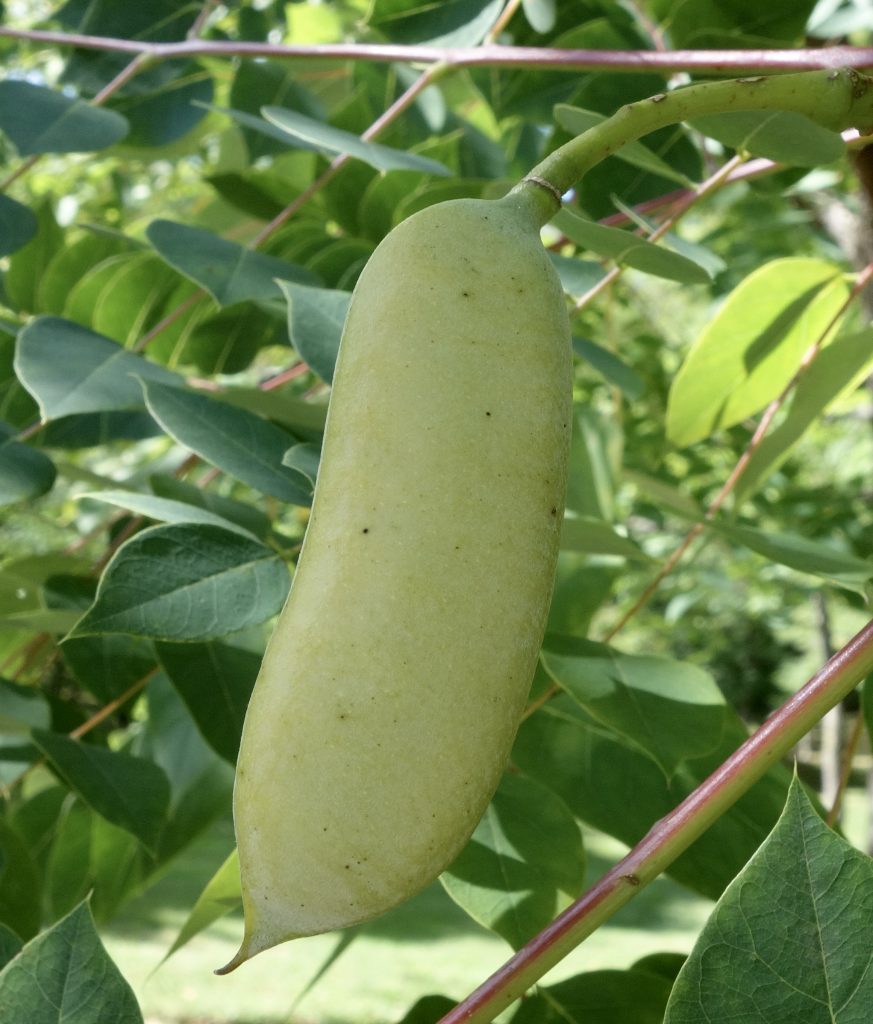
Kentucky coffee bean trees are dioecious, meaning there are separate male and female individuals. Those growing near Fermilab’s Illinois Accelerator Research Center are female, which means the flowers eventually mature into large, bean-shaped pods that give off a sweet aroma when opened. Photo: Arb O’Retum
“Kentucky coffee tree is interesting because it’s often popular as a landscaping plant,” Levernier said.
Despite its given moniker, the seeds of Kentucky coffee tree are highly toxic to humans and should not be ingested.
The Fermilab site also features a few large, stately honey locust trees, which dump most of their pendulous, spiral bean pods over the Fermilab bicycle path along Batavia Road in the fall and winter. Another member of the bean family, honey locusts can often be easily identified by their large thorns that grow along the trunk. The honey locusts at Fermilab have had their thorns trimmed because of their close proximity to the bike path.
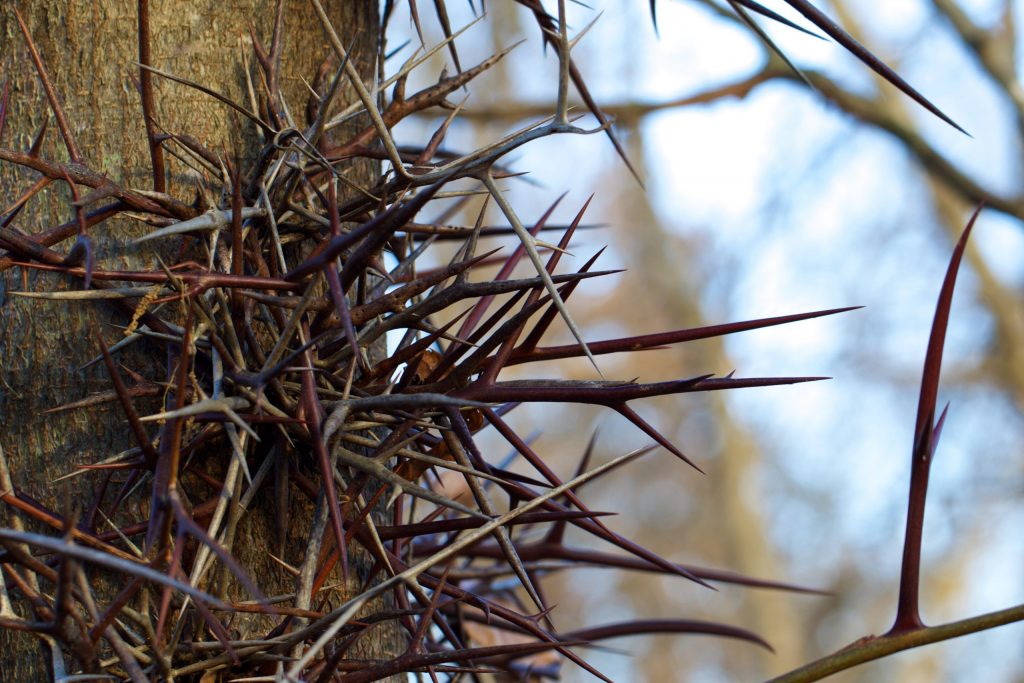
Honey locusts can in most cases be easily identified by their large thorns. Photo: Bill Bumgarner
Another ancient but much less common plant in Illinois, osage orange trees are a type of mulberry that grow at Fermilab and produce vibrantly green fruit the size of softballs. These trees began disappearing from large portions of their former range after the disappearance of their dispersers. Likely the only reason they’re still around today is their ability to clone themselves by growing new trees from their long network of roots, or — in the case of those in Illinois — by being useful to humans.
“Osage orange was introduced to north Illinois for use as fence rows,” Levernier said. “Once more modern fences were invented, this species has declined over time.”
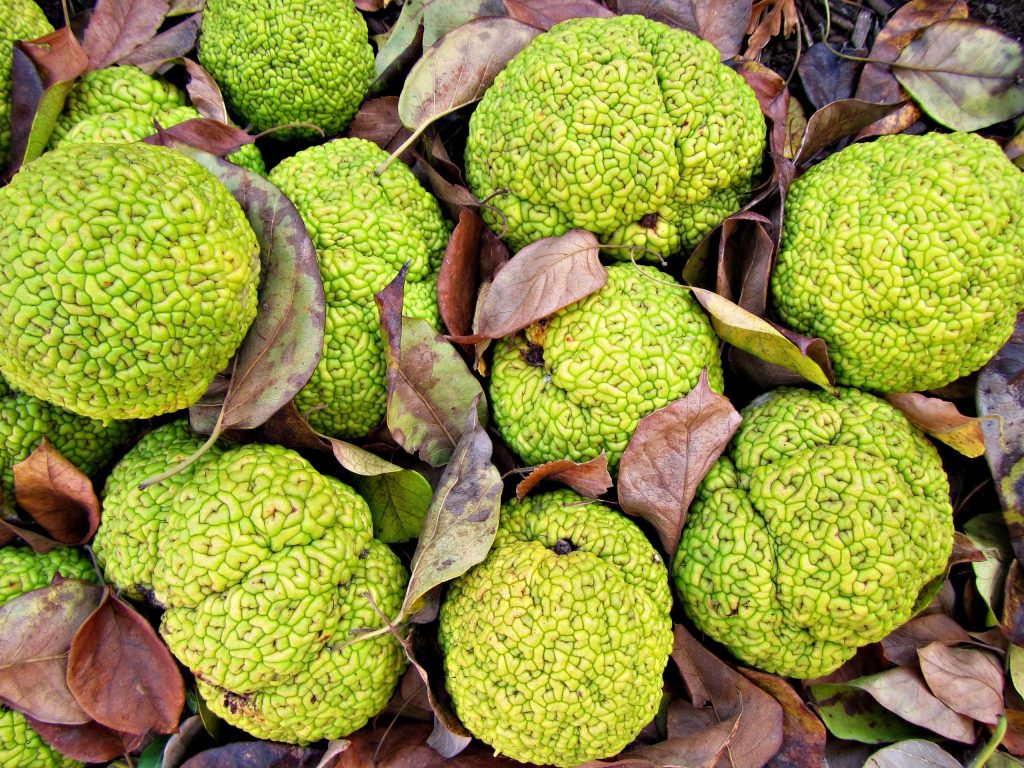
Osage orange trees are a type of mulberry that grow at Fermilab and produce large, vibrantly green fruit the size of softballs that were once likely consumed by mastodons but now go largely uneaten. Photo: CameliaTWU
Return of the mammoths
It’s entirely possible that mammoths might soon make a big comeback. Scientists have been able to extract as much as 80% of woolly mammoth DNA from preserved samples. While it’s unlikely we’ll ever be able to perfectly clone a mammoth due to the fragmentary nature of fossilized DNA, it’s possible that portions of the mammoth genome could be spliced with that of modern elephants. The resulting hybrid mammoths could then be returned to their former ranges in the cold northern tundra and areas where anachronistic plants have grown for thousands of years, awaiting the return of their missing partners.
The Fermilab site has been designated a National Environmental Research Park by the U.S. Department of Energy. The lab’s environmental stewardship efforts are supported by the Department of Energy Office of Science as well as Fermilab Natural Areas.
Fermilab is supported by the Office of Science of the U.S. Department of Energy. The Office of Science is the single largest supporter of basic research in the physical sciences in the United States and is working to address some of the most pressing challenges of our time. For more information, visit science.energy.gov.

